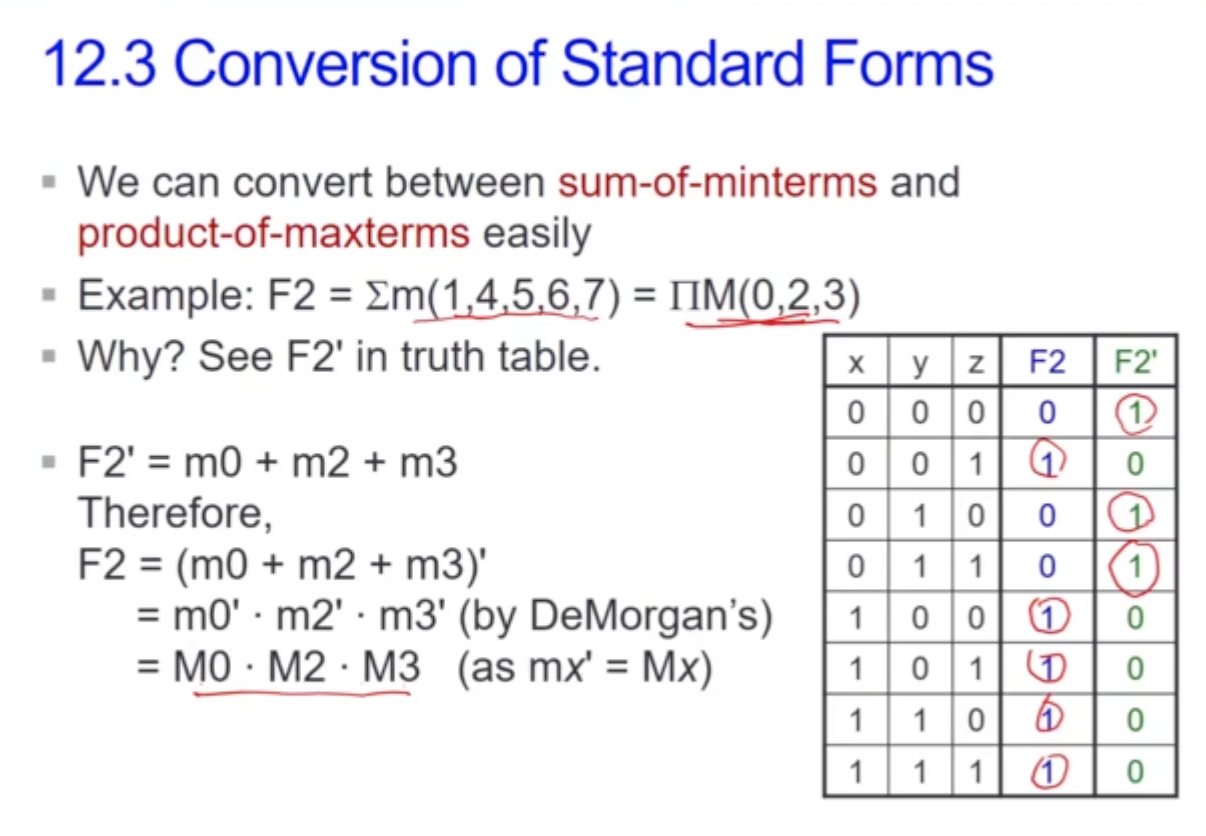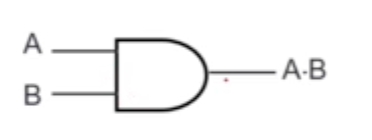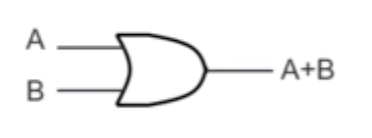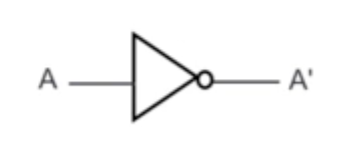Digital Circuits
Two voltage levels
- High/ Low
- 1/ 0
Two Types
- Combinational: no memory
- Multiplexers
- Sequential: with memory
- Counters, registers
Boolean Algebra
Boolean Values
- True
- False
Connectives and their logic gates
- Conjunction (AND)
- Disjunction (OR)
- Negation (NOT)
Precedence of Operators
Highest Precedence to lowest
- Not
- And
- Or
Laws of Boolean Algebra
Identity Laws
Inverse/ complement laws
Commutative laws
Associative laws
Distributive laws
Duality
- if the AND/OR operators and identity elements 0/1 in a Boolean equation are interchanged, it remains valid.
- Gives free theorems - “two for the price of one”, as a Boolean equation is logically equivalent to its dual. SO, you prove one theorem and the other comes for free!
Warning
Duality is not the same as Complement Functions
Theorems
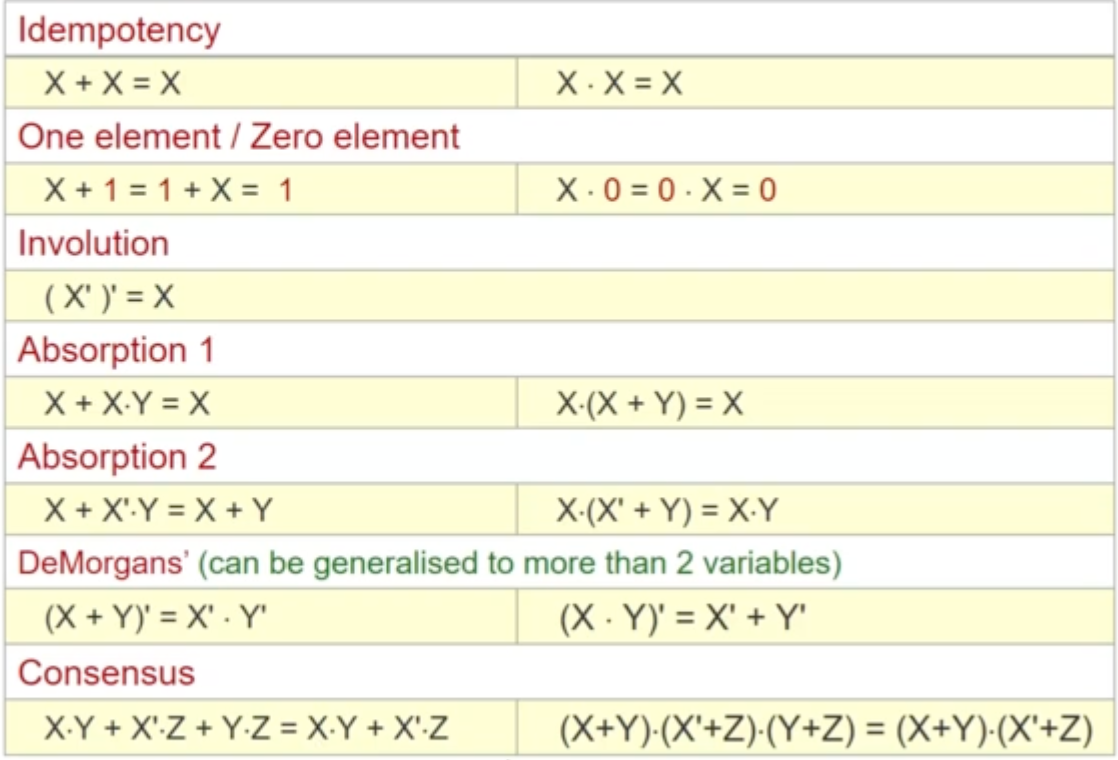
- Idempotency, one element, involution, absorption, demorgans, consensus
Boolean Functions
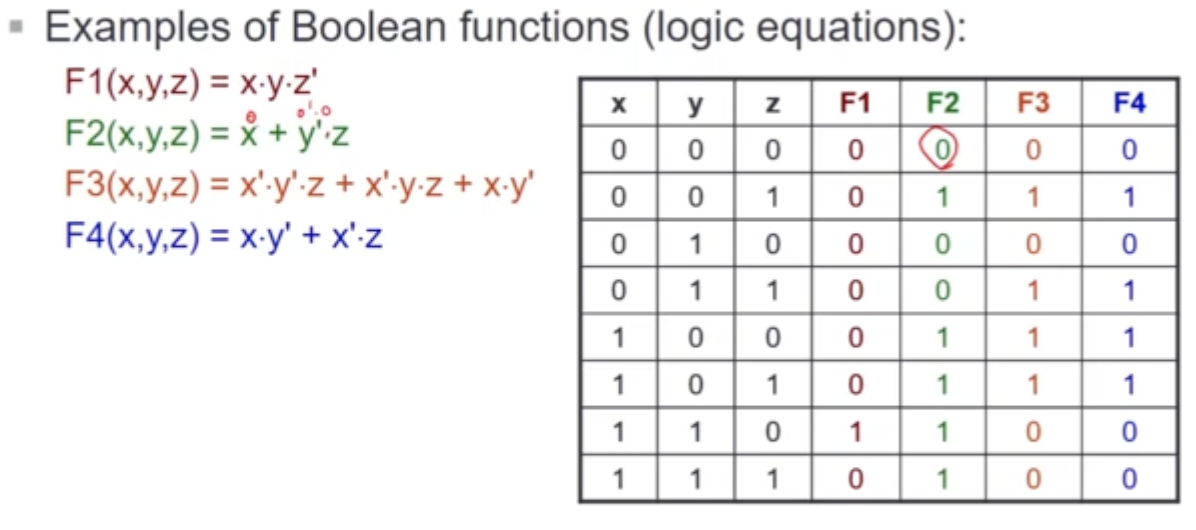
Complement Functions
- Given a boolean function F, the complement of F denoted as F’, is obtained by interchanging 1 with 0 in the function’s output values
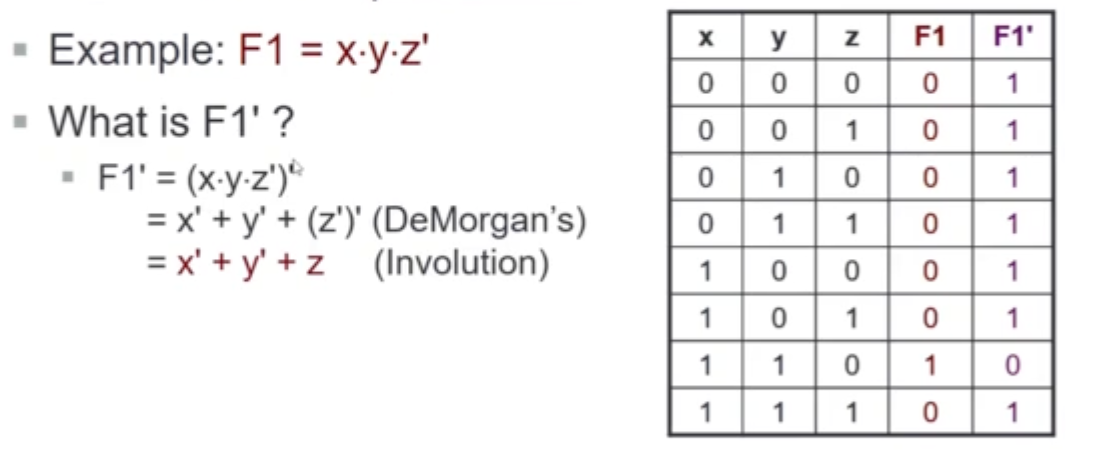
Standard Forms
Literals
A Boolean variable on its own or in its complemented form
Product Term
A single literal or a logical product (AND) of several literals
Sum term
- A single literal or a logical sum (OR) of several literals
Sum-of-Products (SOP) expression
- A product term or a logical sum (OR) of several product terms
Product-of-Sums (POS) expression
- A sum term or a logical product (AND) of several sum terms
Note
Every boolean expression can be expressed in SOP or POS form
Minterms and Maxterms
Minterm
- A minterm of n variables is a product term that contains n literals from all the variables
- e.g. On variables x and y, the min terms are
- e.g. On variables x and y, the min terms are
Maxterm
- a maxterm of n variables is a sum term that contains n literals from all the variables
- e.g. On variables x and y, the maxterms are
- e.g. On variables x and y, the maxterms are
General
- in general, with n variables, we have up to minterms and maxterms
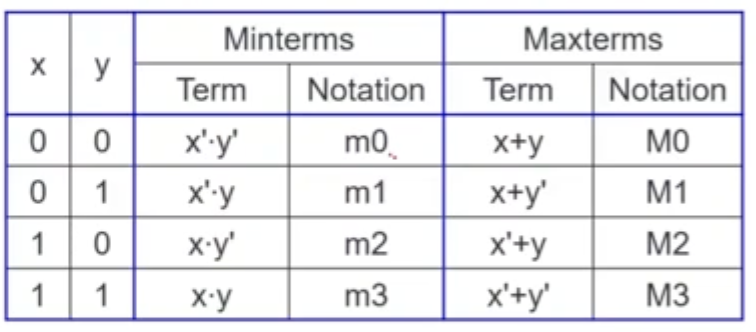
- Trick for minterm: x’ dot y’ is m0 because 00 in binary is 0
- likewise, x dot y’ is m2 because 10 in binary is 2
- Complement: 0
- non-complement: 1
Important
Each minterm is the complement of its corresponding maxterm. Likewise, each maxterm is the complement of its corresponding midterm.
Canonical Forms
Sum-of-minterms = Canonical sum-of-products
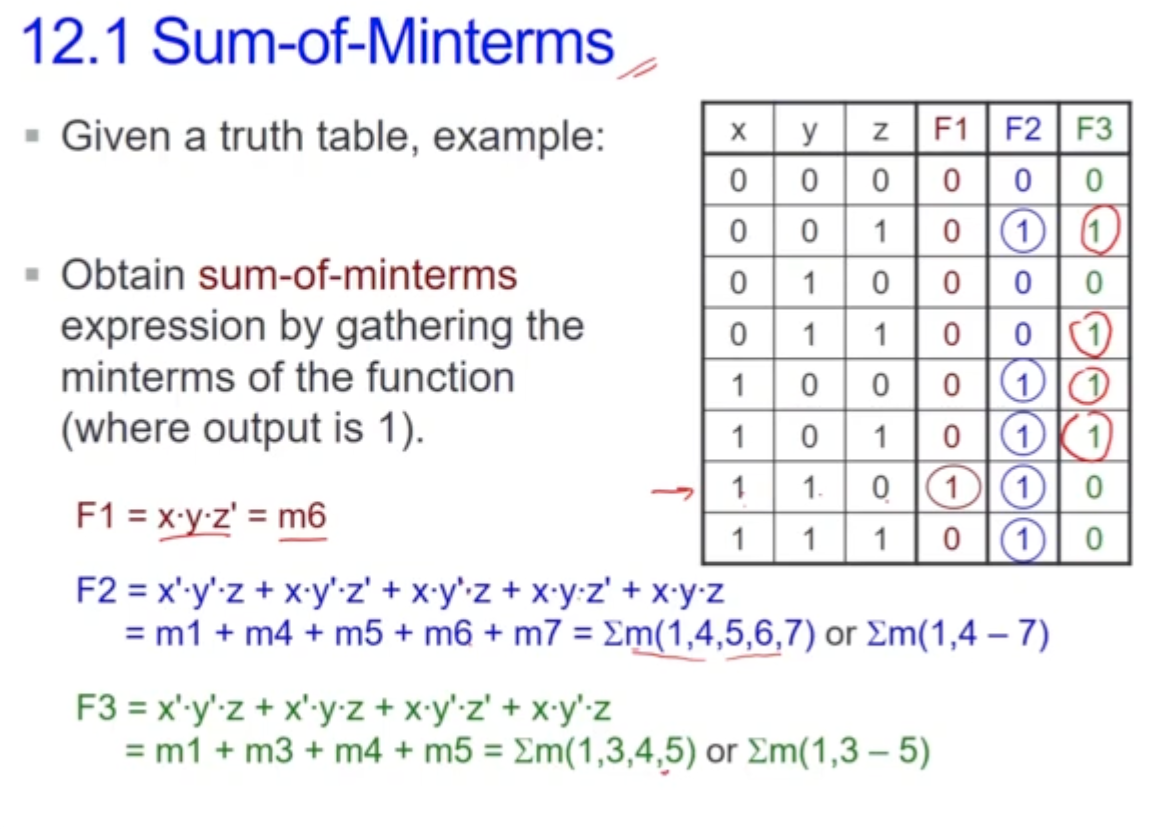
Product-of-maxterms = Canonical product-of-sums
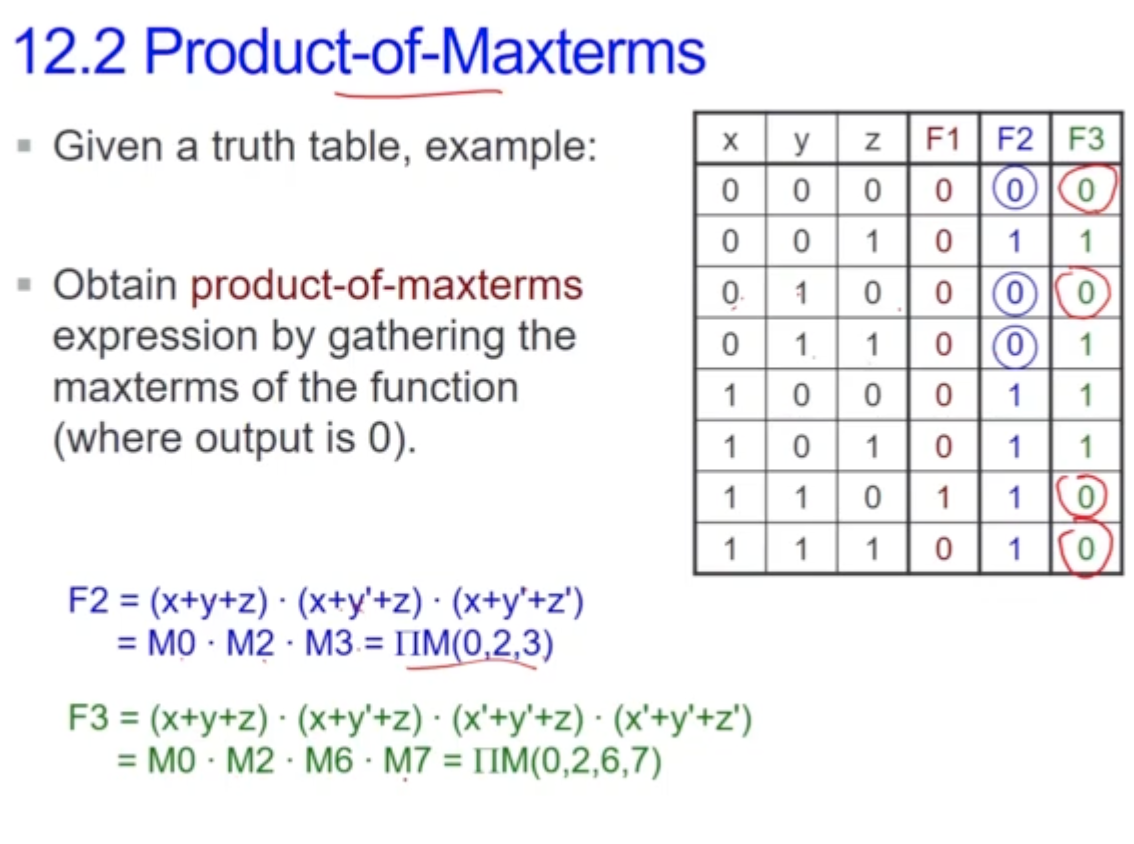
Conversion
